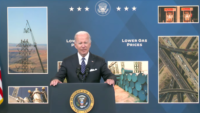In last year’s Water Resources Development Act, Congress directed the Army Corps of Engineers to rewrite its water-resources “Principles and Guidelines” for the first time in 25 years. The first part of the Corps’ proposed revision, covering general principles, is out, and it has sparked criticism from industry and environmental groups.
 U.S. Army Corps of Engineers Congress mandated a revision.
|
Assistant Army Secretary for Civil Works John Paul Woodley Jr. has called the P&G the Corps’ “yardstick” for evaluating projects. The current version, published in 1983, set “national economic development” as the sole federal objective in planning water projects. Critics have called that criterion too narrow.
Congress told the Corps to redo the P&G by November 2009, spelling out factors for it to address. They include assessing public safety in formulating project plans and ensuring non-structural projects’ values are weighed.
“The principles are the very basics that drive everything else,” a senior administration official says. The proposal, published on Sept. 12, “I think...incorporates the things that [Congress] wanted and other things that the administration wanted as well,” the official adds.
The proposal injects non-monetary benefits into the evaluation equation. Gerald Galloway, a University of Maryland engineering professor and retired Army brigadier general, says it “eliminates a real bias toward a single focus on economic development” and is a good start.
The plan also raises the monetary-benefit minimum for navigation and hydropower projects to a benefit-to-cost ratio of 1.5, “consistent with protecting the environment,” up from 1.0 now. “The administration would like to see something a little more robust” than 1.0, the official says. “You want to make sure that you put your best projects out there.”
For ecosystem-restoration projects, the threshold would be a cost-effective, sustainable option that “best reflects the appropriate level to invest” there, among other alternatives. For flood-protection and “multiple-objective” projects whose non-monetary benefits are the majority of their total benefits, officials could consider a plan with a monetary benefit-cost ratio of less than 1.0, the proposal says.
Industry officials blasted the draft. Amy Larson, National Waterways Conference president, calls it “far worse than what’s in effect right now.” The Associated General Contractors opposes the approach, says Marco Giamberardino, senior director of the federal and heavy construction division. He calls the 1.5 ratio “arbitrary.”
Environmentalists are not happy, either. Melissa Samet, American Rivers senior director of water resources, says the proposals “have some significant problems.” She believes they “undermine” WRDA water-resources policy.
Comments are due by Oct. 15.


Post a comment to this article
Report Abusive Comment